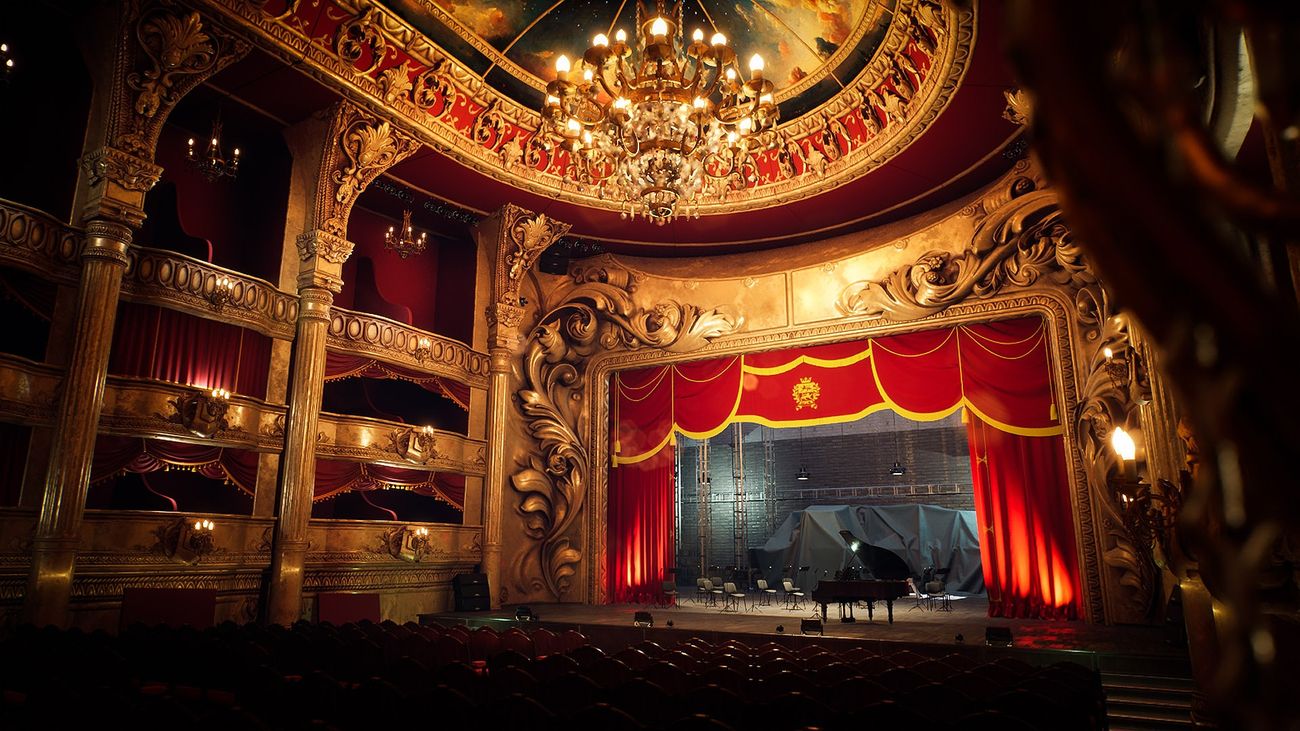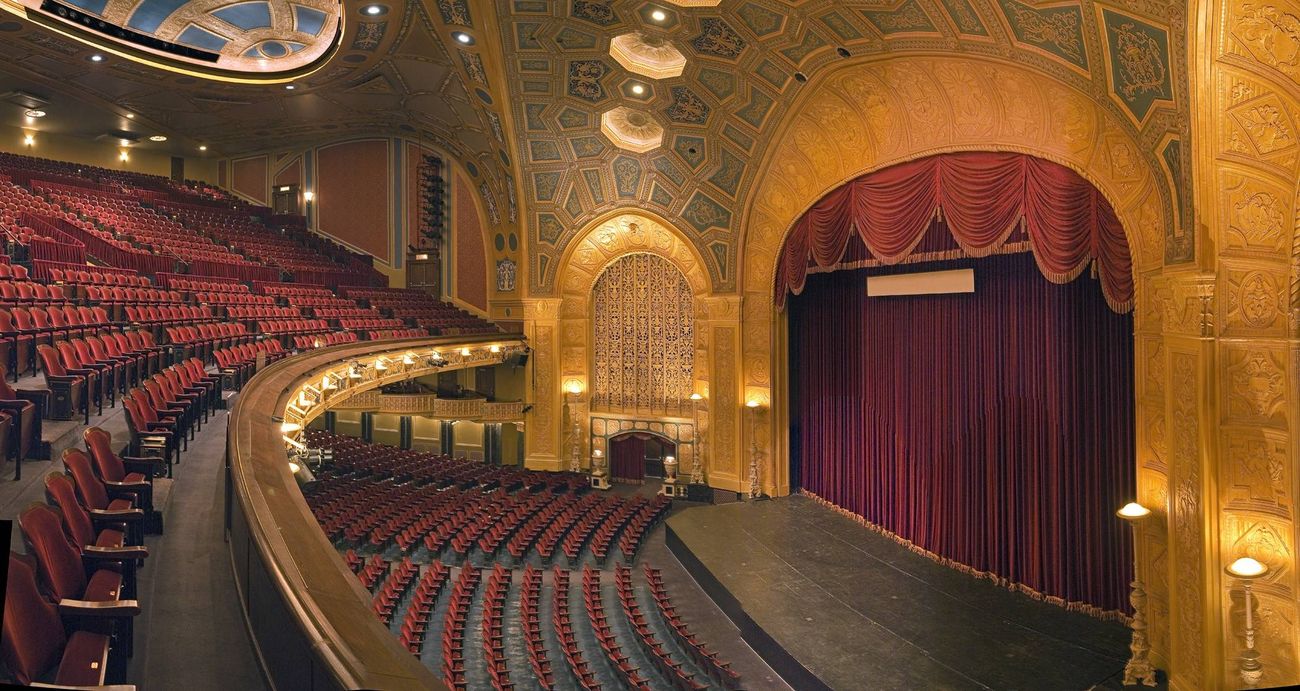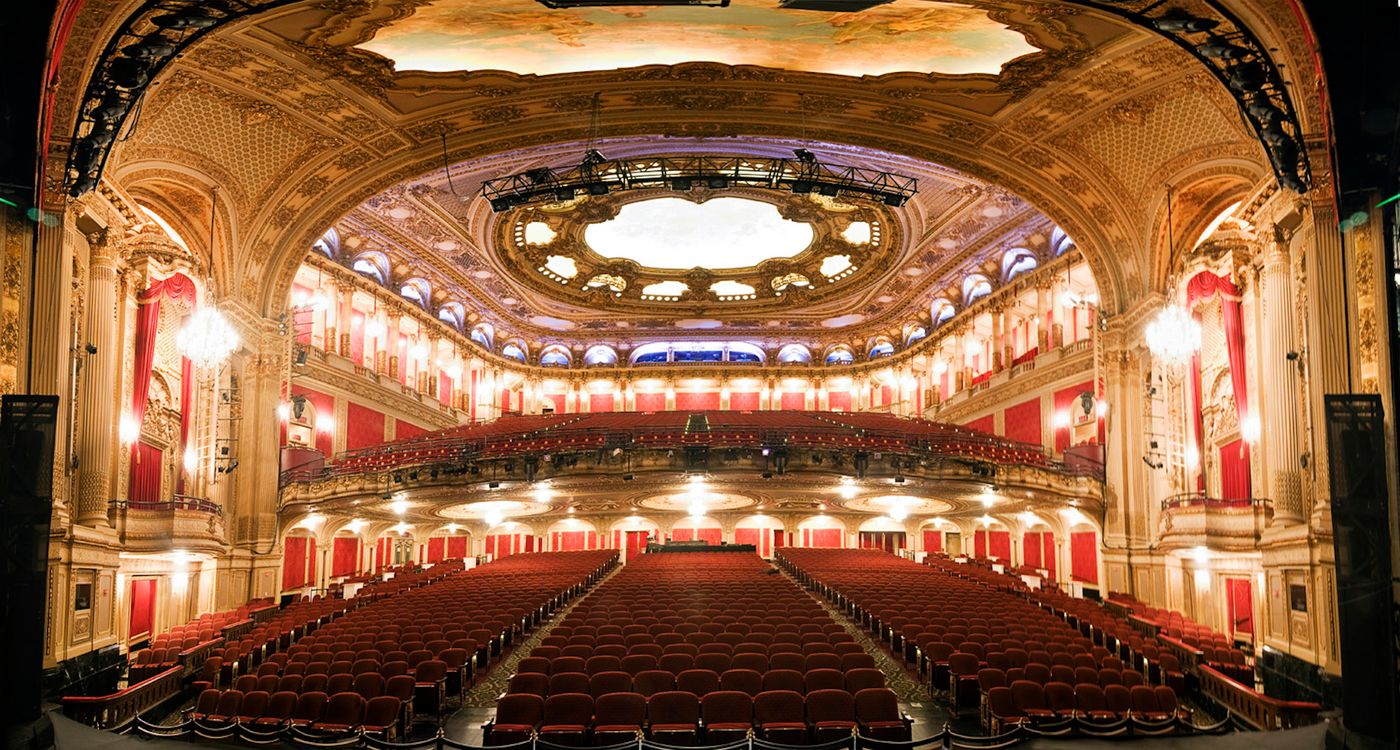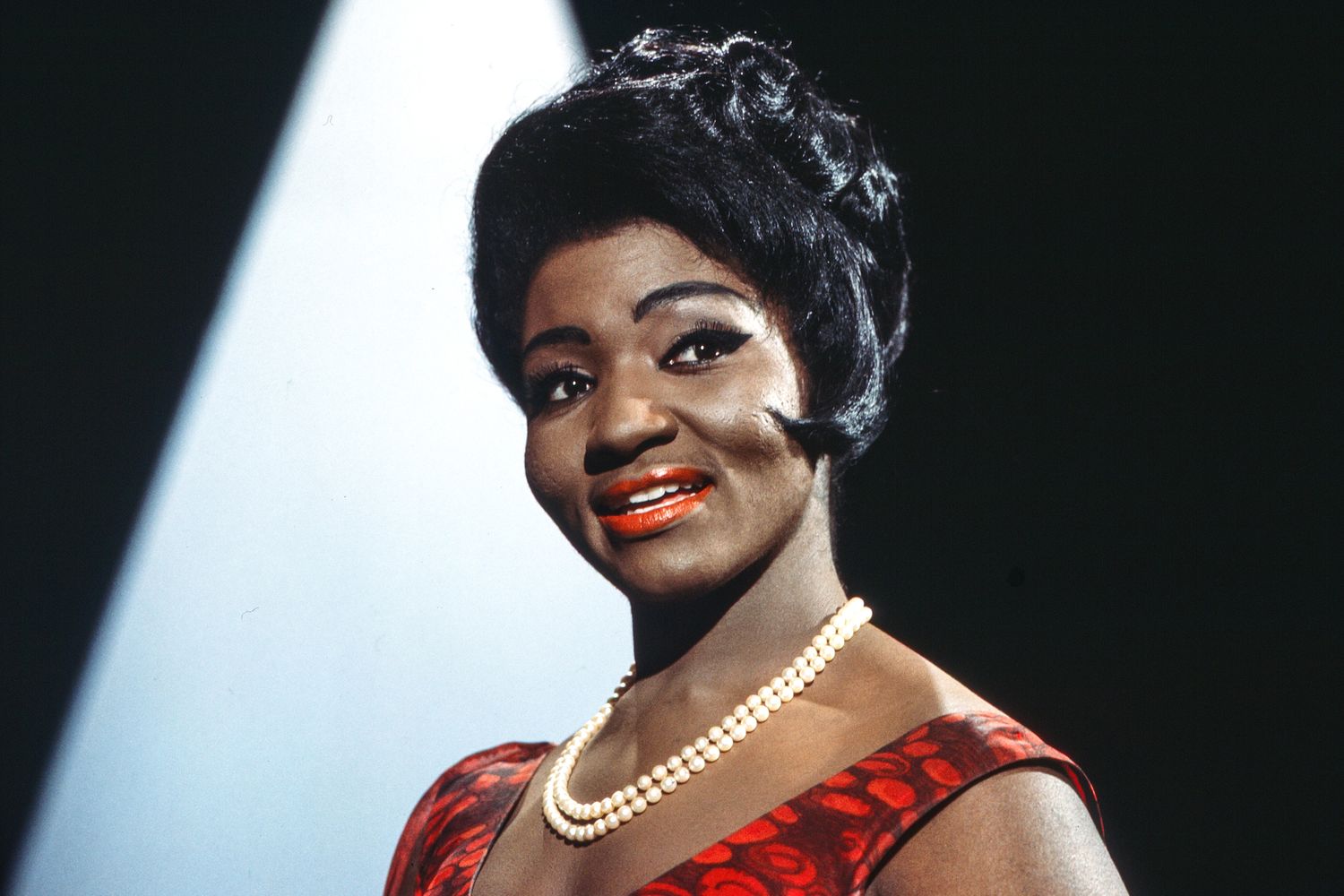Home>Events & Info>Opera>What Is An Opera House


Opera
What Is An Opera House
Modified: January 22, 2024
Learn more about opera and its significance by exploring the world of opera houses. Discover the magic of this art form in iconic venues and its impact on cultural heritage.
(Many of the links in this article redirect to a specific reviewed product. Your purchase of these products through affiliate links helps to generate commission for AudioLover.com, at no extra cost. Learn more)
Table of Contents
- Introduction
- Definition of an Opera House
- Historical Background of Opera Houses
- Architecture and Design of Opera Houses
- Functions and Purpose of an Opera House
- Role of an Opera House in the Cultural Landscape
- Impact of Opera Houses on the Performing Arts
- Contemporary Opera Houses Around the World
- The Future of Opera Houses
- Conclusion
Introduction
Welcome to the enchanting world of opera houses, where art, culture, and music converge to create breathtaking performances that captivate audiences worldwide. Opera houses are iconic cultural institutions that have stood the test of time, preserving and showcasing the rich heritage of opera.
In this article, we will take a deep dive into the realm of opera houses, exploring their historical significance, architectural grandeur, and their crucial role in the cultural landscape. We will also examine their impact on the performing arts and the evolving role they play in contemporary society.
An opera house is much more than a mere venue for staging opera performances. It is a sanctuary for artistic expression and a hub for talented performers, composers, musicians, and production teams to bring the magic of opera to life. These magnificent institutions are a testament to human creativity and the enduring power of music as a form of storytelling.
Whether you are a seasoned opera aficionado or just beginning to explore this fascinating art form, understanding the inner workings and historical significance of opera houses will deepen your appreciation for the exquisiteness of opera as an art form.
So, let’s raise the curtain and embark on a journey to unravel the wonders and mysteries of opera houses around the world.
Definition of an Opera House
An opera house can be defined as a dedicated venue for presenting opera performances, which are dramatic productions combining music, theater, and often dance. It serves as a platform for staging grand operas, as well as other musical performances such as ballet, symphony concerts, and choral performances.
At its core, an opera house is a specialized theater designed with acoustics and visual aesthetics in mind, allowing for optimal viewing and listening experiences. It is meticulously crafted to create the perfect atmosphere, ensuring that every note, every word, and every movement resonates with the audience.
Opera houses provide an immersive experience, transporting the audience into a world of enchantment, passion, and emotion. From the ornate interiors adorned with elegant chandeliers and plush seating to the breathtaking stage designs and elaborate costumes, every aspect of an opera house is designed to enhance the overall performance and create a sense of grandeur.
These cultural institutions are primarily known for their association with opera, as the name suggests. However, they often extend their repertoire to include a wide range of musical genres, dance performances, and theatrical productions, catering to the diverse tastes of their audiences.
Opera houses are not limited to just the performances they present; they also serve as centers for artistic education, training, and nurturing young talents. Many opera houses have associated academies or schools that offer specialized training programs in vocal music, acting, stagecraft, and various disciplines related to the performing arts.
While the primary function of an opera house is to host opera performances, they also play a vital role in preserving cultural heritage, promoting artistic expression, and fostering a sense of community. They are a hub for artistic collaboration, bringing together performers, directors, musicians, and production teams from around the world to create extraordinary and memorable productions.
With their rich history, architectural splendor, and unwavering dedication to the arts, opera houses continue to captivate audiences and inspire generations, ensuring that the timeless beauty of opera and other performing arts lives on.
Historical Background of Opera Houses
The history of opera houses traces back to the late 16th century, when opera as an art form emerged in Italy. The first opera house, the Teatro San Cassiano, opened in Venice in 1637, marking the beginning of a new era in the world of performing arts.
During the Renaissance period, opera became a popular form of entertainment among the aristocracy and the elite. These early opera houses were opulent venues designed to showcase the grandeur and elegance that surrounded the art of opera.
As opera gained popularity and spread across Europe, opera houses began to emerge in major cultural centers such as Paris, Vienna, London, and Dresden. Each city aimed to have its own prestigious opera house as a symbol of cultural prowess and social refinement.
One of the most renowned opera houses in history is the Palais Garnier in Paris, which opened its doors in 1875. Designed by Charles Garnier, this architectural masterpiece became a symbol of opulence and luxury, reflecting the grandeur of the French Empire. It stands as a testament to the lasting legacy of opera houses as cultural landmarks.
Throughout the 18th and 19th centuries, opera houses became the focal points of artistic innovation and experimentation. Composers such as Mozart, Verdi, Wagner, and Puccini created groundbreaking operas that were staged in these grand theaters, forever leaving their mark on the history of opera.
Unfortunately, many opera houses faced challenges during times of war, economic crises, and changing societal dynamics. Some were destroyed or severely damaged, while others struggled to maintain financial stability. However, the dedication and resilience of opera enthusiasts and the importance placed on preserving cultural heritage ensured the survival and restoration of these buildings.
In recent times, many traditional opera houses have undergone renovations and modernizations to cater to the evolving needs of both performers and audiences. The incorporation of advanced technology, improved acoustics, and adaptable stage designs has expanded the possibilities of staging innovative productions.
Today, opera houses continue to be a vital part of our cultural landscape, hosting breathtaking performances that celebrate the beauty of human expression through music, theater, and dance. They stand as living testaments to the enduring power of opera and its ability to transcend time and captivate audiences for generations to come.
Architecture and Design of Opera Houses
The architecture and design of opera houses are integral to the overall experience and ambiance of the performances. They are meticulously crafted to create an immersive environment that enhances the visual and auditory aspects of the opera.
Opera houses often boast stunning architectural styles, ranging from neoclassical and Baroque to Art Nouveau and modernist designs. The exteriors of these grand structures are characterized by their magnificent facades, adorned with intricate carvings, ornate sculptures, and majestic entrances.
Upon entering an opera house, visitors are greeted by the breathtaking interiors. The spacious foyers and grand staircases create a sense of anticipation and elegance. In many opera houses, chandeliers hang from the ceilings, casting a warm, dazzling glow that adds to the enchantment of the space.
The auditorium, the heart of the opera house, is meticulously designed to create the perfect acoustics and offer optimal sightlines for the audience. The shape of the auditorium, often in the form of a horseshoe or fan, ensures that the sound is distributed evenly, allowing for an immersive musical experience.
The use of velvet seating, plush upholstery, and decorative details adds a touch of luxury and comfort for the audience members. Private boxes, arranged in tiers around the auditorium, provide an intimate and exclusive viewing experience for some patrons.
The stage itself is a marvel of engineering and design. It is equipped with advanced technical capabilities, accommodating intricate set designs, movable stage elements, and sophisticated lighting and sound systems. The adaptable stage allows for seamless scene transitions and the creation of elaborate sets that transport the audience to different worlds and eras.
Opera houses also pay particular attention to costume and prop design, enhancing the visual experience of the performances. Lavish costumes and meticulously crafted props add depth and authenticity to the storytelling, complementing the music and the acting on stage.
Contemporary opera houses have embraced modern architectural trends and innovative design elements. Some incorporate transparent or translucent materials, allowing natural light to filter into the performance spaces. Others blend traditional architectural styles with modern aesthetics, creating a harmonious balance between the past and the present.
Overall, the architecture and design of opera houses are a testament to the commitment to creating an unforgettable experience for both performers and audience members. They are spaces where art and architecture coexist, intertwining to create a sensory feast for the eyes and ears.
Functions and Purpose of an Opera House
An opera house serves multiple functions and plays a pivotal role in the cultural fabric of a society. Beyond being a venue for staging opera performances, these magnificent institutions serve as hubs for artistic expression, cultural preservation, and community engagement.
First and foremost, the primary function of an opera house is to provide a platform for presenting opera productions. It serves as a dedicated space where operatic works, spanning different genres and eras, can be performed by talented artists and ensembles. Opera houses curate a diverse repertoire, showcasing classical masterpieces alongside contemporary works, catering to a broad range of audience preferences.
In addition to opera productions, opera houses often host ballet performances, symphony concerts, chamber music recitals, and other forms of artistic expressions. This diversity of programming ensures that opera houses remain vibrant cultural institutions that cater to a wide spectrum of artistic tastes.
Opera houses also have a crucial role in promoting artistic education and nurturing young talent. Many of these institutions have associated academies or schools that offer comprehensive training programs in vocal music, acting, and other disciplines related to the performing arts. These programs help to cultivate the next generation of performers, ensuring the continuity and growth of the art form.
Moreover, opera houses contribute to the preservation of cultural heritage. They often dedicate resources to revive and recreate classic productions, adhering to historical authenticity while adding their unique artistic interpretations. Through these efforts, opera houses safeguard the legacy of operatic works, allowing audiences to experience the rich history and traditions of the art form.
Opera houses also play a vital role in the cultural and social fabric of a community. They are gathering places where people come together to share their love for opera and the performing arts. Opera houses foster a sense of community spirit and pride, serving as cultural landmarks that attract both locals and tourists.
Furthermore, opera houses contribute to the local economy, driving tourism and creating employment opportunities for artists, technicians, ushers, and administrative staff. They often collaborate with other cultural institutions, museums, and educational organizations, forming symbiotic relationships that enrich the overall cultural landscape.
Lastly, opera houses inspire and transport audiences to different worlds through the power of music and storytelling. They evoke emotions, stimulate intellectual curiosity, and ignite the spark of creativity. Opera houses have the extraordinary ability to transcend social barriers, uniting people from diverse backgrounds in shared artistic experiences.
In summary, opera houses serve as much more than mere venues for opera performances. They fulfill multiple functions, from providing a stage for operatic works to preserving cultural heritage, supporting artistic education, and fostering community engagement. Opera houses are cultural treasures that continue to enrich our lives and contribute to the vitality of the arts.
Role of an Opera House in the Cultural Landscape
An opera house plays a significant role in shaping and enriching the cultural landscape of a society. It serves as a beacon of artistic expression, a catalyst for social change, and a stronghold of cultural heritage. The impact of opera houses extends far beyond their immediate surroundings, influencing the broader cultural fabric of a community.
One of the primary roles of an opera house in the cultural landscape is to be a purveyor of artistic excellence. By staging high-quality productions, opera houses showcase the utmost talent and creativity in the performing arts. They bring together exceptional performers, directors, musicians, and designers to create transcendent experiences for audiences.
Furthermore, opera houses contribute to cultural diversity by presenting works from various genres, periods, and cultures. They foster an appreciation for different artistic traditions and expose audiences to new experiences and perspectives. Opera houses often collaborate with international artists and companies, introducing global influences and promoting cross-cultural understanding.
Opera houses also have a transformative impact on the local community. They serve as platforms for the expression of local talents, giving opportunities to emerging artists and showcasing the unique cultural identity of a region. The presence of an opera house can revitalize neighborhoods, attracting visitors and boosting economic activity in the surrounding areas.
Another crucial role of opera houses is to engage with the community through outreach programs and educational initiatives. They often collaborate with schools, offer workshops, and organize events to introduce young audiences to the magic of opera and foster a love for the arts. These efforts contribute to cultivating a future generation of arts enthusiasts and ensuring the sustainability of the art form.
Moreover, opera houses become catalysts for social change by addressing contemporary issues through artistic expression. They have the unique ability to provoke thought, challenge societal norms, and initiate conversations about important social and political topics. Opera as an art form has a long history of engaging with profound themes and conveying powerful messages, and opera houses continue to be platforms for this expression.
Additionally, opera houses serve as custodians of cultural heritage. They preserve and revive classic productions, ensuring that the legacy of operatic works is passed down through generations. By maintaining historical authenticity while incorporating innovative interpretations, opera houses bridge the past and present, honoring tradition while embracing artistic evolution.
In the cultural landscape, opera houses also foster collaboration and cross-disciplinary artistic endeavors. They often collaborate with other performing arts organizations, bringing together opera, ballet, theater, and symphony to create unique and groundbreaking productions. These collaborations not only enhance the artistic experience for audiences but also promote a holistic and integrated approach to the arts.
In summary, opera houses play a multifaceted role in the cultural landscape. They are champions of artistic excellence, promoters of cultural diversity, catalysts for social change, educators, custodians of cultural heritage, and collaborative influencers. Opera houses have a profound impact on the cultural vitality of a society, elevating the arts and enriching the lives of individuals and communities.
Impact of Opera Houses on the Performing Arts
Opera houses have a transformative impact on the performing arts, influencing not only the realm of opera but also other artistic disciplines. They serve as breeding grounds for innovation, incubators for talent, and catalysts for artistic collaboration and experimentation.
One of the significant impacts of opera houses on the performing arts is their role in nurturing and showcasing talent. Opera houses provide platforms for exceptional performers, including singers, actors, dancers, and musicians, to showcase their skills and artistry. Through rigorous audition processes and training programs, opera houses identify and support emerging talents, allowing them to shine on an international stage.
Opera houses also have a significant influence on the development of new works and the evolution of artistic expression. They commission new operas, encouraging contemporary composers to push boundaries and explore innovative approaches in their compositions. These original works often challenge traditional norms, combining different artistic disciplines and incorporating modern storytelling techniques.
Moreover, opera houses foster artistic collaboration and interdisciplinary projects. They bring together artists from various fields, such as choreographers, set designers, costume designers, and lighting designers, to create immersive and visually stunning productions. By blending diverse artistic disciplines, opera houses broaden the traditional boundaries of opera, pushing the boundaries of what is possible on the stage.
The impact of opera houses is not limited to their immediate artistic endeavors; they also influence the broader cultural landscape. Their presence and influence contribute to the overall enrichment and growth of the performing arts community. Through collaborations with other performing arts organizations, opera houses create synergies and opportunities for cross-pollination of creative ideas.
Opera houses also inspire and educate future generations of artists and art enthusiasts. They offer educational programs, workshops, and apprenticeships, allowing aspiring performers and professionals to learn from experienced practitioners. These initiatives help to cultivate a vibrant and skilled pool of talent, ensuring the longevity and vitality of the performing arts.
Furthermore, opera houses serve as cultural ambassadors, spreading the beauty and richness of opera and the performing arts to a global audience. They host international productions, inviting renowned artists and companies from around the world to collaborate and share their artistic experiences. This cross-cultural exchange promotes cultural understanding and appreciation, fostering a global community united by a love for the arts.
Ultimately, opera houses have a profound and lasting impact on the performing arts. They drive artistic innovation, nurture talents, facilitate interdisciplinary collaborations, and contribute to the growth and development of the broader artistic ecosystem. Opera houses are vibrant and dynamic cultural institutions that shape the future of the performing arts while preserving and honoring the traditions of the past.
Contemporary Opera Houses Around the World
Opera houses continue to thrive and evolve in the modern era, adapting to new artistic trends and technological advancements. These contemporary opera houses showcase innovation in design, programming, and the use of technology, while still embracing the timeless allure of the operatic art form.
One notable example is the Sydney Opera House in Australia, an architectural marvel and a UNESCO World Heritage site. Designed by Danish architect Jørn Utzon, its iconic sail-shaped roofs have become an internationally recognized symbol of Sydney. The Sydney Opera House hosts a diverse range of opera, ballet, theater, and contemporary performances, attracting both local and international artists and audiences.
In Europe, the Elbphilharmonie in Hamburg, Germany, stands as a testament to the merging of modern architectural design and classical music. This striking venue, designed by Swiss architecture firm Herzog & de Meuron, houses multiple concert halls, including one specifically dedicated to opera performances. Its acoustically exceptional spaces and visionary design have captivated audiences since its opening in 2017.
The Beijing National Centre for the Performing Arts, also known as the “Egg,” is a stunning example of contemporary opera house architecture in China. Designed by French architect Paul Andreu, the curved glass and titanium structure seamlessly integrates into the surrounding landscape. The venue hosts opera, ballet, orchestral performances, and other artistic events, showcasing the rich cultural heritage of China.
In the United States, the Metropolitan Opera House in New York City holds a prominent place as one of the world’s premier opera houses. Founded in 1880, it has been a stage for countless legendary performances. With its intricate historical décor and state-of-the-art technical capabilities, the Metropolitan Opera House continues to enchant audiences with its world-class opera productions.
Contemporary opera houses are not limited to large metropolises. The Harbin Opera House in Harbin, China, is a bold architectural masterpiece nestled in the snowy landscape of northeastern China. Designed by MAD Architects, the building resembles a natural ice formation, creating a breathtaking visual spectacle. This unique opera house showcases both traditional and contemporary opera performances, contributing to the cultural revitalization of the region.
These examples are just a few of the many contemporary opera houses around the world that embody the spirit of innovation and artistic excellence. Each opera house embraces its own distinct architectural style, programming choices, and artistic vision, contributing to the rich tapestry of the global operatic landscape.
From their stunning architectural designs to their commitment to presenting diverse and thought-provoking performances, contemporary opera houses continue to redefine the boundaries of opera and bring this timeless art form into the modern era.
The Future of Opera Houses
The future of opera houses is an exciting and evolving landscape, driven by changing audience demands, technological advancements, and new artistic possibilities. As opera houses navigate the challenges of a rapidly changing world, they continue to reimagine their role and ensure their relevance in the years to come.
One of the crucial factors shaping the future of opera houses is the integration of technology. Opera houses are exploring innovative ways to utilize technology to enhance the audience experience. This includes the use of high-definition projections, virtual reality, and interactive elements that bring new dimensions to the storytelling and create immersive environments for the audience.
Additionally, opera houses are embracing digital platforms to reach wider audiences and make opera more accessible. Live streaming performances, online education programs, and digital archives of past productions allow opera lovers to engage with the art form regardless of their physical location. It also opens up opportunities for collaborations and exchanges between international opera houses, expanding the global reach of opera.
The future also brings a greater emphasis on diversity, inclusion, and representation within opera houses. Efforts are being made to showcase works from diverse cultures, collaborate with artists from underrepresented backgrounds, and present stories that resonate with a broader audience. By making opera more inclusive and reflective of the world we live in, opera houses can connect with new audiences and foster a sense of belonging for all.
Sustainability is another critical aspect of the future of opera houses. As society becomes more environmentally conscious, opera houses are implementing green initiatives to reduce their ecological footprint. This includes implementing energy-efficient technologies, sustainable set designs, and promoting eco-friendly practices in all aspects of production and management.
Moreover, opera houses are exploring hybrid forms of opera that blend traditional and contemporary elements. These experimental productions often bridge different art forms, merging opera with dance, theater, multimedia, and other genres. By pushing the boundaries of artistic expression, opera houses can attract new audiences and create unique experiences that resonate with diverse tastes.
Collaboration and partnerships are also vital for the future of opera houses. They are increasingly working with other cultural organizations, educational institutions, and community groups to create shared initiatives and engage with different communities. These collaborations foster a sense of collective responsibility and enable opera houses to make a more profound impact on society as a whole.
As technology continues to advance and societal needs evolve, opera houses must remain adaptable and forward-thinking. They must continue to embrace innovation, nurture emerging talent, diversify programming, and engage with their communities. By doing so, opera houses can ensure their continued relevance and empower opera to flourish in the ever-changing cultural landscape of the future.
Conclusion
Opera houses hold a special place in the hearts of music and theater enthusiasts, serving as gateways to a world of artistic grandeur and emotional depth. These cultural institutions, with their rich history, awe-inspiring architecture, and commitment to preserving and nurturing the art of opera, have had a profound impact on the cultural landscape.
Throughout the centuries, opera houses have evolved and adapted to societal changes and artistic innovations. They have showcased the finest performances, nurtured talents, and pushed the boundaries of artistic expression. From the grand opera houses of Europe to contemporary architectural wonders around the world, these venues continue to inspire, captivate, and bring people together.
The role of opera houses extends beyond their primary function of hosting opera performances. They serve as catalysts for social change, agents of cultural preservation, and centers for artistic collaboration and education. Opera houses are places where tradition meets innovation, where diverse cultural expressions converge, and where shared experiences uplift communities.
Looking towards the future, opera houses face new challenges and opportunities. The integration of technology, the emphasis on inclusivity and sustainability, and the exploration of hybrid forms of opera will shape the landscape of opera houses. They will continue to adapt, evolve, and redefine themselves to remain vibrant and relevant in a rapidly changing world.
As we celebrate the beauty and power of opera houses, we must recognize the crucial role they play in the broader cultural ecosystem. Their impact extends far beyond the confines of their physical walls, influencing the performing arts scene, nurturing talent, and engaging communities.
So, let us continue to embrace and support these magnificent institutions, attending performances, exploring their historical and architectural wonders, and championing the timeless elegance of opera. Through our appreciation and dedication, we ensure the continued vitality and lasting legacy of opera houses for generations to come.











